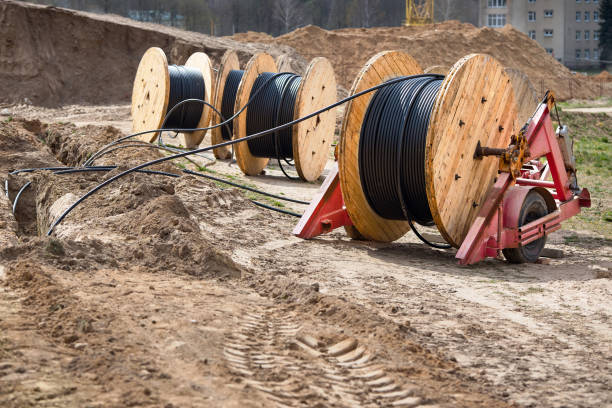Telecom trenching is a method used for laying underground telecommunication cables, conduits, and associated infrastructure. Unlike aerial construction, which involves suspending cables and wires above ground, trenching involves excavating trenches below the surface to bury telecommunications lines. Here’s a detailed description of telecom trenching:
- Planning and Surveying: Before trenching begins, thorough planning and surveying are conducted to determine the optimal route for the telecommunications infrastructure. Factors such as terrain, soil conditions, existing utilities, and potential obstacles are taken into account during this phase.
- Excavation: Excavation equipment, such as backhoes, trenchers, or excavators, is used to dig trenches along the planned route. The trenches are typically dug to a specific depth and width, depending on the size and type of cables or conduits being installed.
- Installation of Conduits or Direct Burial Cables: In some cases, conduits (plastic or metal pipes) are laid within the trenches to house the telecommunication cables. Conduits provide protection for the cables and allow for easier maintenance and future upgrades. Alternatively, direct burial cables may be laid directly into the trenches without conduits.
- Placing Telecommunication Cables: Once the conduits are installed or trenches are dug, telecommunication cables are placed inside them. These cables may include fiber optic cables, copper cables for telephone lines, coaxial cables for cable television, or other types of data transmission cables.
- Backfilling and Compaction: After the cables are laid in the trenches, the excavated soil is backfilled into the trenches and compacted to provide stability and support for the buried infrastructure. Proper compaction is essential to prevent settling and damage to the cables over time.
- Testing and Certification: Once the trenching and cable installation are complete, the telecommunications infrastructure undergoes testing to ensure that it meets industry standards and specifications. This may involve testing for signal integrity, insulation resistance, and other performance parameters. After successful testing, the installation is certified for operation.
- Restoration: The final step in telecom trenching is the restoration of the excavation site. This may include regrading the terrain, replanting vegetation, repairing any surface disturbances, and restoring any pavement or landscaping that was disrupted during the trenching process. The goal is to leave the area in a condition that is as close to its original state as possible.


